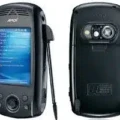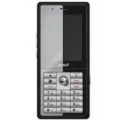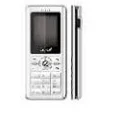Amoi WMA8701A






-
:
-
: 2.2" 320x240 pixels
-
: 820mAh
-
: 2MP Video recorder
Unveil the Amoi WMA8701A, a feature-rich phone that encapsulates the essence of mobile communication with its advanced capabilities. Launched in 2007, this phone is a marvel of its time, offering a blend of classic features and modern functionality.
The WMA8701A sports a 2.2-inch TFT display, providing a bright and clear view for all your multimedia needs. With a generous 200MB of internal storage, expandable via microSD, you have ample space to store your contacts, messages, and files.
Capture the world around you with the 2 MP primary camera, and stay connected with friends and family through the VGA videocall camera. Despite its compact size, the WMA8701A does not compromise on performance.
The phone’s sleek slider design is both stylish and practical, fitting comfortably in your hand or pocket. It measures 109.4 x 48 x 13.8 mm, making it an ideal travel companion.
Equipped with Bluetooth 1.2 with A2DP, the WMA8701A ensures easy connectivity with other devices. Although it lacks Wi-Fi, this phone more than makes up for it with its robust feature set and reliable performance.
Powered by a removable Li-Ion 820 mAh battery, the Amoi WMA8701A is built to last, keeping you connected when you need it most. Whether you’re looking for a dependable primary phone or a secondary device, the Amoi WMA8701A is a choice that won’t disappoint. Experience the perfect combination of simplicity and efficiency with the Amoi WMA8701A.
Specs
Network
| 2G Network GSM 850 / 900 / 1800 / 1900 - SIM 1 & SIM 2 (dual-SIM) CDMA 800 / 1900 |
GSM 900 / 1800 |
| 3G Network |
UMTS 2100 |
| Speed |
HSPA |
LAUNCH
| Announced | September, 2025 |
| Status |
Discontinued |
BODY
| Dimensions | 109.4 x 48 x 13.8 mm (4.31 x 1.89 x 0.54 in) |
| SIMs SIM (Subscriber Identity Module) is a small card that contains mobile network subscriber's account information. This allows the phone using the card to attach to a mobile network. The SIM card is most commonly associated with GSM and UMTS mobile networks. Moving a SIM card from one phone to another allows a subscriber to switch mobile phones without having to contact their mobile network carrier. SIM cards can also be used by a phone to store limited amounts of data, such as phone numbers and text messages. |
Mini-SIM |
Display
| Display Type Display Technology => A number of display technologies and types used in mobile phones => TFT (Thin Film Transistor), IPS (In-Place Switching), OLED (Organic Light Emitting Diode), AMOLED (Active-Matrix Organic Light-Emitting Diode), Super AMOLED (an even advanced version of AMOLED), Resistive Touchscreen (Resistive touchscreens contain two layer of conductive material with a very small gap between them which acts as a resistance), Capacitive Touchsceen (Capacitive touchscreen technology consists of a layer of glass coated with a transparent conductor) | TFT, 256K colors |
| Size | 2.2 inches, 15.0 cm2 (~28.5% screen-to-body ratio) |
| Resolution | 320 x 240 pixels, 4:3 ratio (~182 ppi density) |
PLATFORM
MEMORY
| Card Slot Memory Card Slot is a special slot for inserting a memory card. Memory cards allow you to expand the phone's built-in memory, A memory card (sometimes called a flash memory card or a storage card) is a small storage medium used to store data such as text, pictures, audio, and video, for use on small, portable or remote computing devices such as mobile phones, mp3 players, digital cameras. | microSD (dedicated slot) |
| Internal | 200MB |
MAIN CAMERA
| Cameras Specs Today’s smartphones come equipped with a very comprehensive set of camera related specifications. Our smartphone, for many of us, has become our primary camera due to it being the one we always have with us. |
2 MP |
| Video | Yes |
SELFIE CAMERA
| Cameras Specs Today’s smartphones come equipped with a very comprehensive set of camera related specifications. Our smartphone, for many of us, has become our primary camera due to it being the one we always have with us. |
VGA videocall camera |
SOUND
| Loudspeaker | No |
| 3.5mm jack | No |
COMMS
| WLAN | No |
| Positioning | No |
| Bluetooth Bluetooth is a wireless communications technology for exchanging data between mobile phones, headsets, computers and other network devices over short distances without wires, Bluetooth technology was primarily designed to support simple wireless networking of personal consumer devices. | 1.2, A2DP |
| Infrared Infrared connectivity is an old wireless technology used to connect two electronic devices. It uses a beam of infrared light to transmit information and so requires direct line of sight and operates only at close range. | |
| USB | No |
| NFC NFC (Near field communication) is a set of standards for smartphones and similar devices to establish peer-to-peer radio communications with each other by touching them together or bringing them into proximity, usually no more than a few inches. | |
| Radio |
Features
BATTERY
| Battery Type Battery Type => Cell phones run on various kinds of batteries depending on the manufacturer, phone size or shape and features. There are basically four types of cell phone batteries => Lithium Polymer, Lithium Ion, Nickel Metal Hydride and Nickel Cadmium. | Li-Ion (Lithium Ion) |
| Capacity Battery Capacity is a measure (typically in Amp-hr) of the charge stored by the battery, and is determined by the mass of active material contained in the battery. The battery capacity represents the maximum amount of energy that can be extracted from the battery under certain conditions. | 820 mAh |
| Placement | Removable |
MISC
| Colors |
Black |
TESTS
Reviews
Disclaimer Note
We strive to maintain accurate and up-to-date content on our website for general information purposes only. Please refrain from using the material for business, legal, or any other decisions.



















